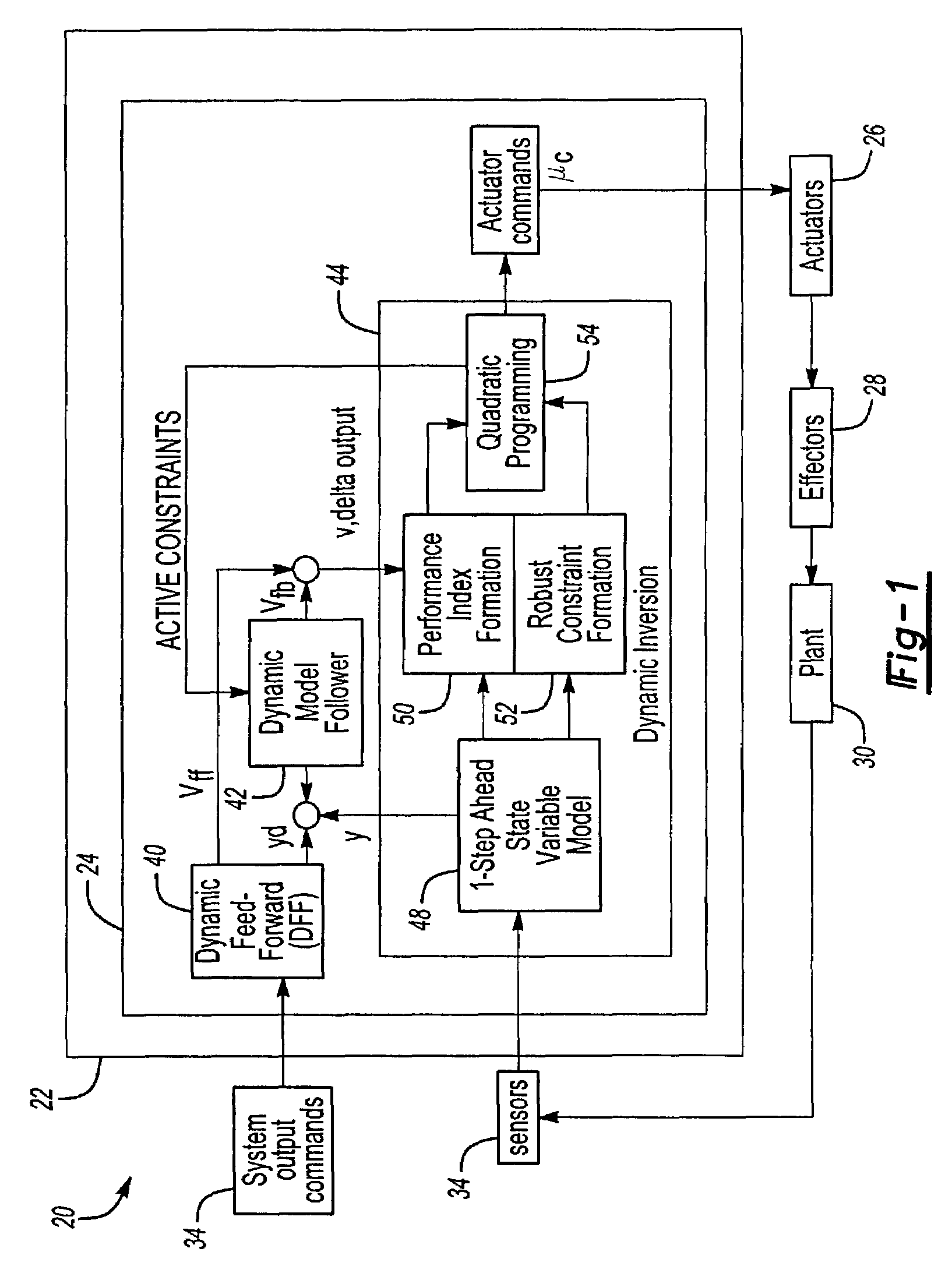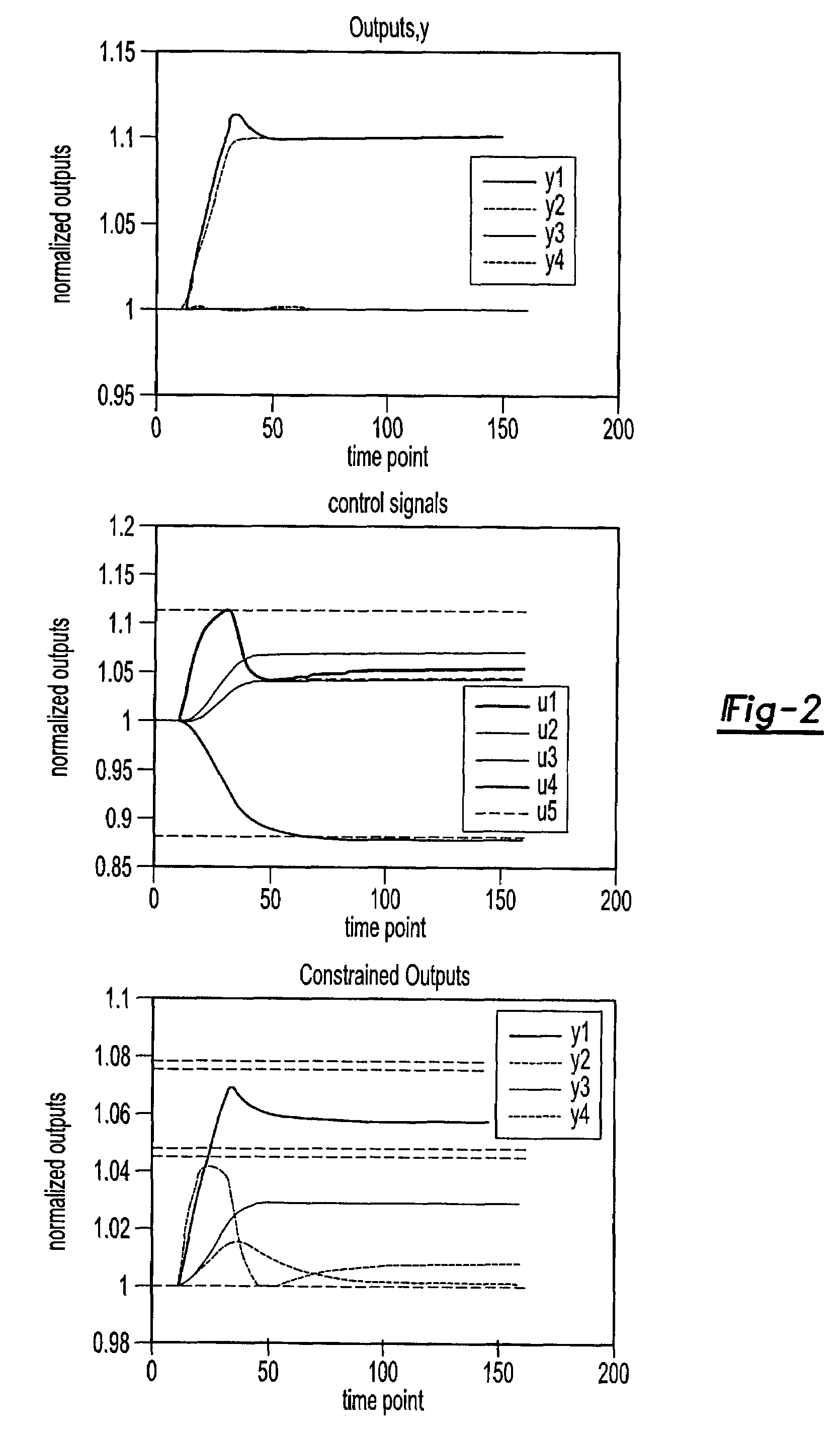Real-time quadratic programming for control of dynamical systems
a dynamical system and quadratic programming technology, applied in the field of control systems, can solve the problems of not violating physical constraints, no rigorous claim about optimal solution, etc., and achieve the effect of rapid convergence and improved cost function valu
- Summary
- Abstract
- Description
- Claims
- Application Information
AI Technical Summary
Benefits of technology
Problems solved by technology
Method used
Image
Examples
Embodiment Construction
[0024]FIG. 1 illustrates a control system 20 implementing the dynamic inversion via real-time quadratic programming algorithm of the present invention. The control system 20 is briefly summarized here and described in more detail in co-pending application U.S. Ser. No. 10 / 308,286, entitled “Constrained Dynamic Inversion Control Algorithm,” filed on the same day and by the same inventors as this patent application, and which is hereby incorporated by reference in its entirety. The constrained dynamic inversion algorithm is meant to be implemented on a discrete time sampled-data computer 22 in order to control a dynamic system. The computer 22 includes a CPU, memory 24 and other known hardware and is programmed to perform as described herein to produce actuator commands, uc. The actuator commands, uc, control a plurality of actuators 26, which take the electronic commands, uc, and turn them into physical forces that adjust a plurality of effectors 28, each of the plurality of actuator...
PUM
| Property | Measurement | Unit |
|---|---|---|
| time | aaaaa | aaaaa |
| frequency | aaaaa | aaaaa |
| CPU time | aaaaa | aaaaa |
Abstract
Description
Claims
Application Information
 Login to View More
Login to View More - R&D
- Intellectual Property
- Life Sciences
- Materials
- Tech Scout
- Unparalleled Data Quality
- Higher Quality Content
- 60% Fewer Hallucinations
Browse by: Latest US Patents, China's latest patents, Technical Efficacy Thesaurus, Application Domain, Technology Topic, Popular Technical Reports.
© 2025 PatSnap. All rights reserved.Legal|Privacy policy|Modern Slavery Act Transparency Statement|Sitemap|About US| Contact US: help@patsnap.com



